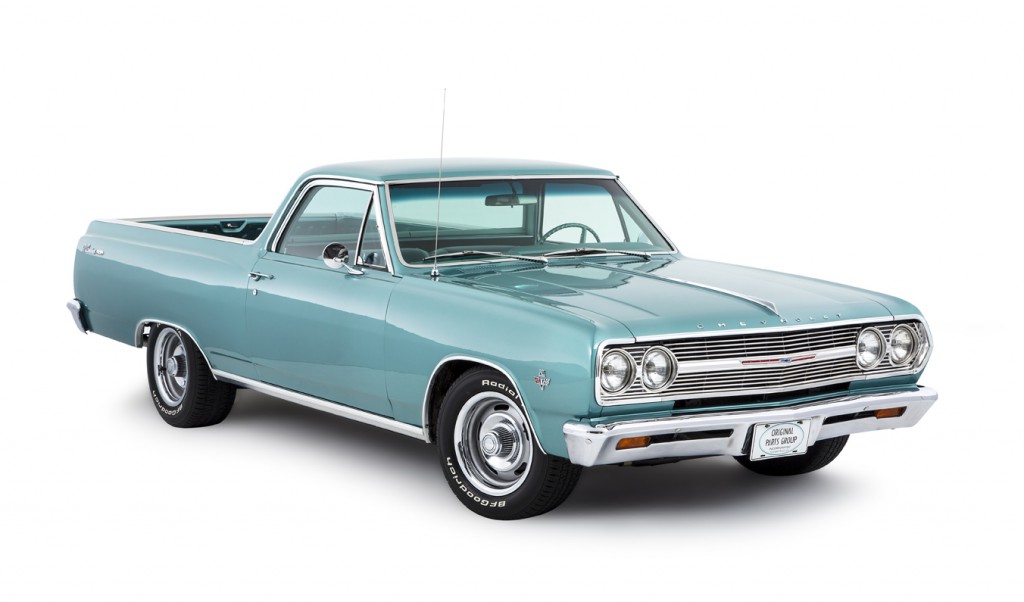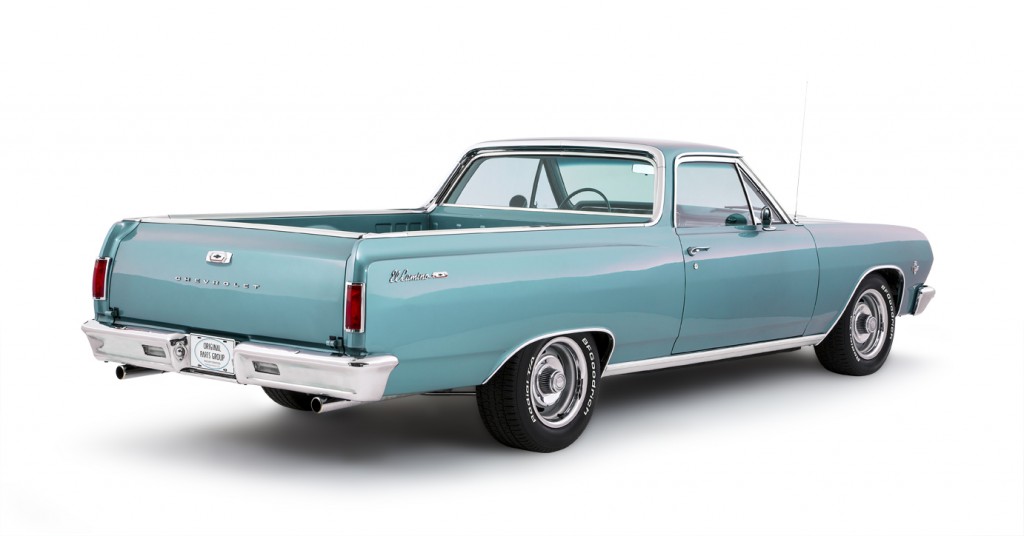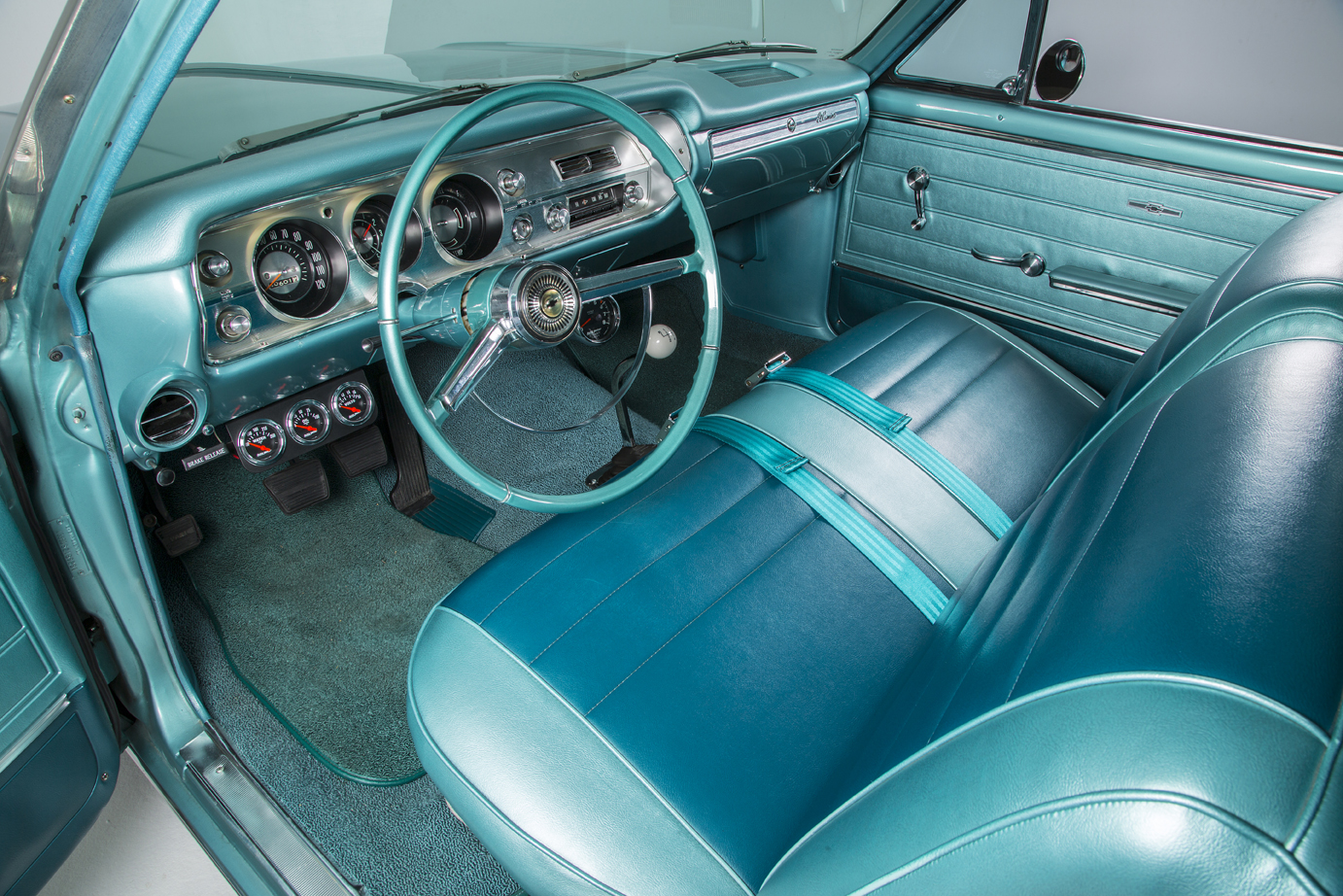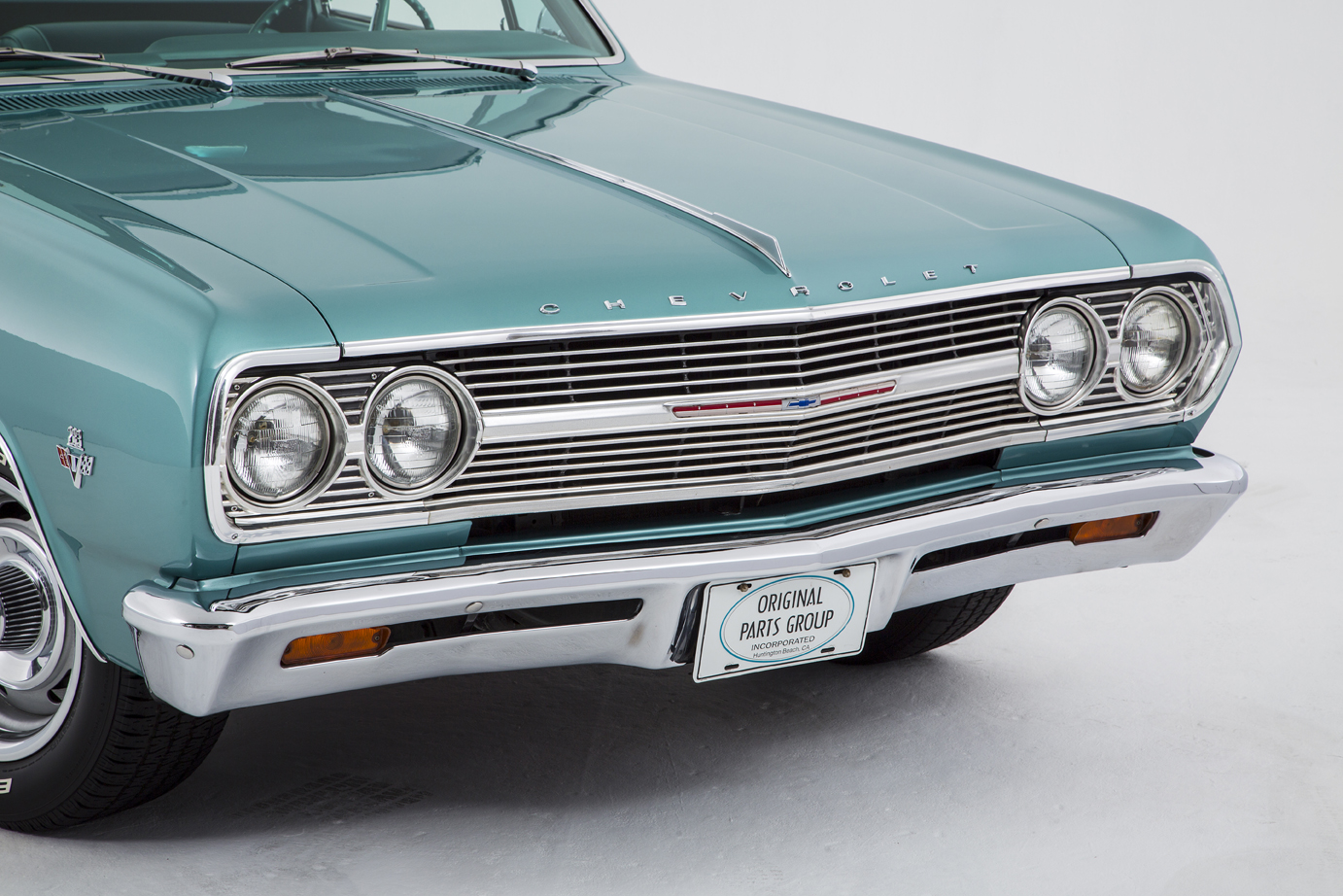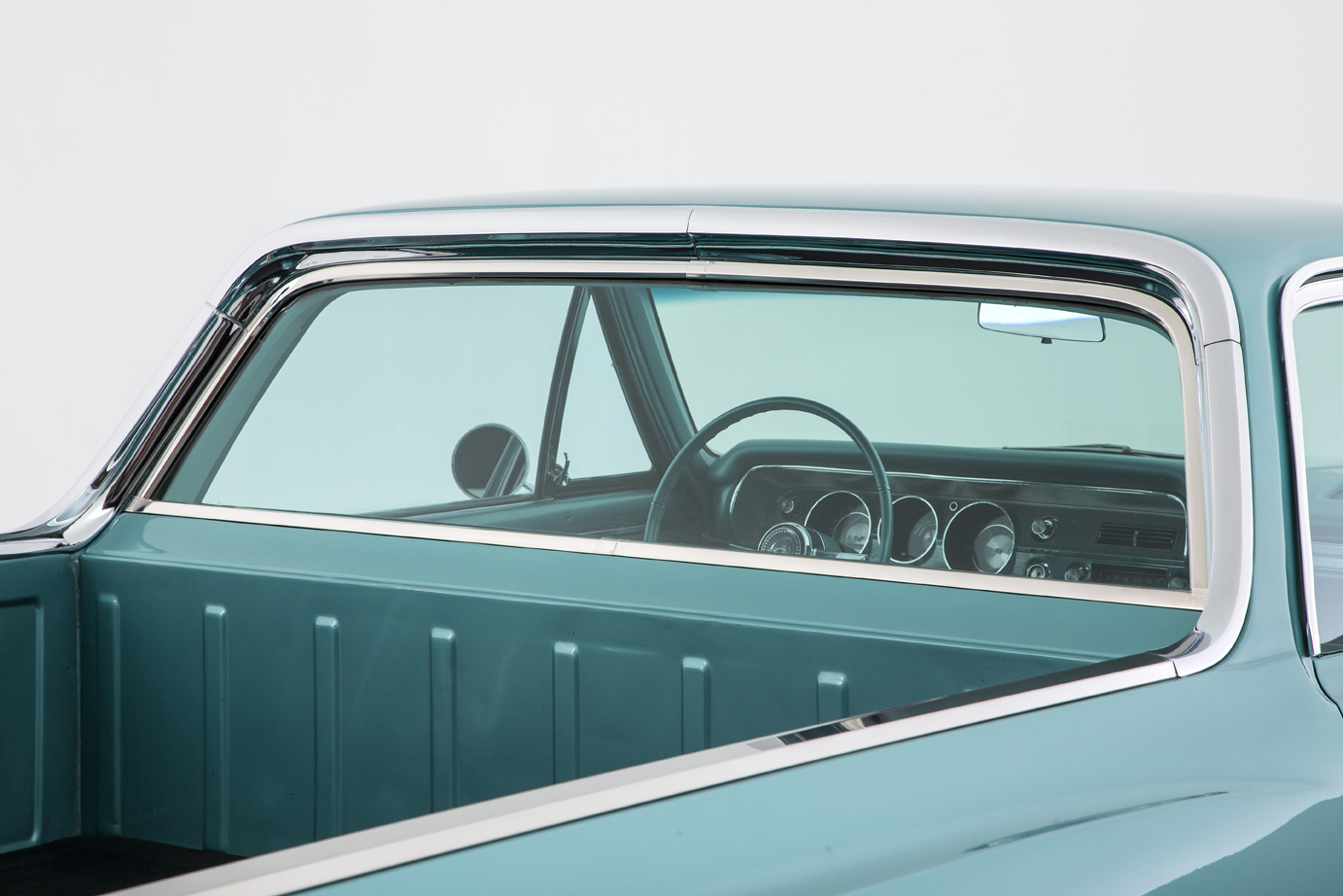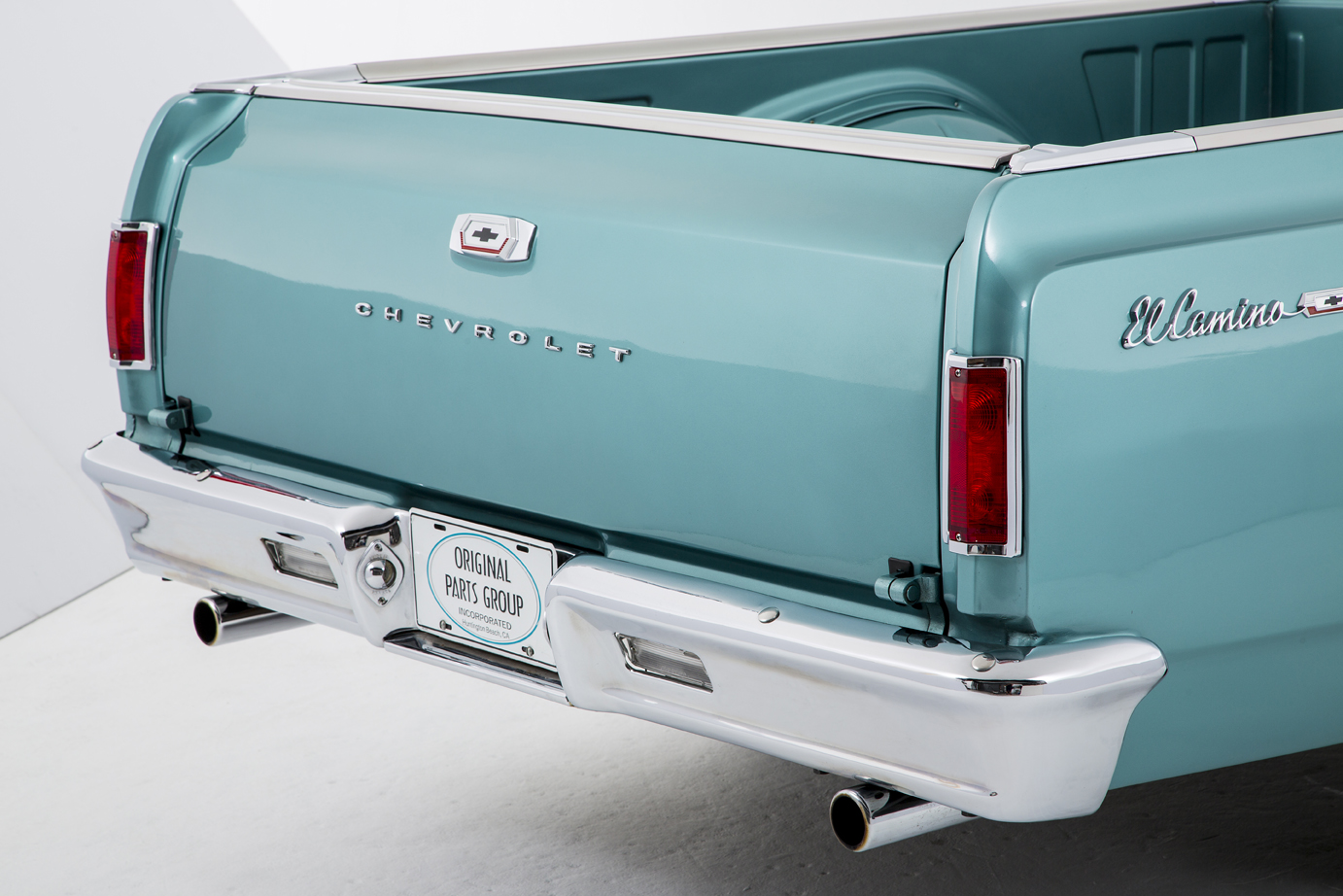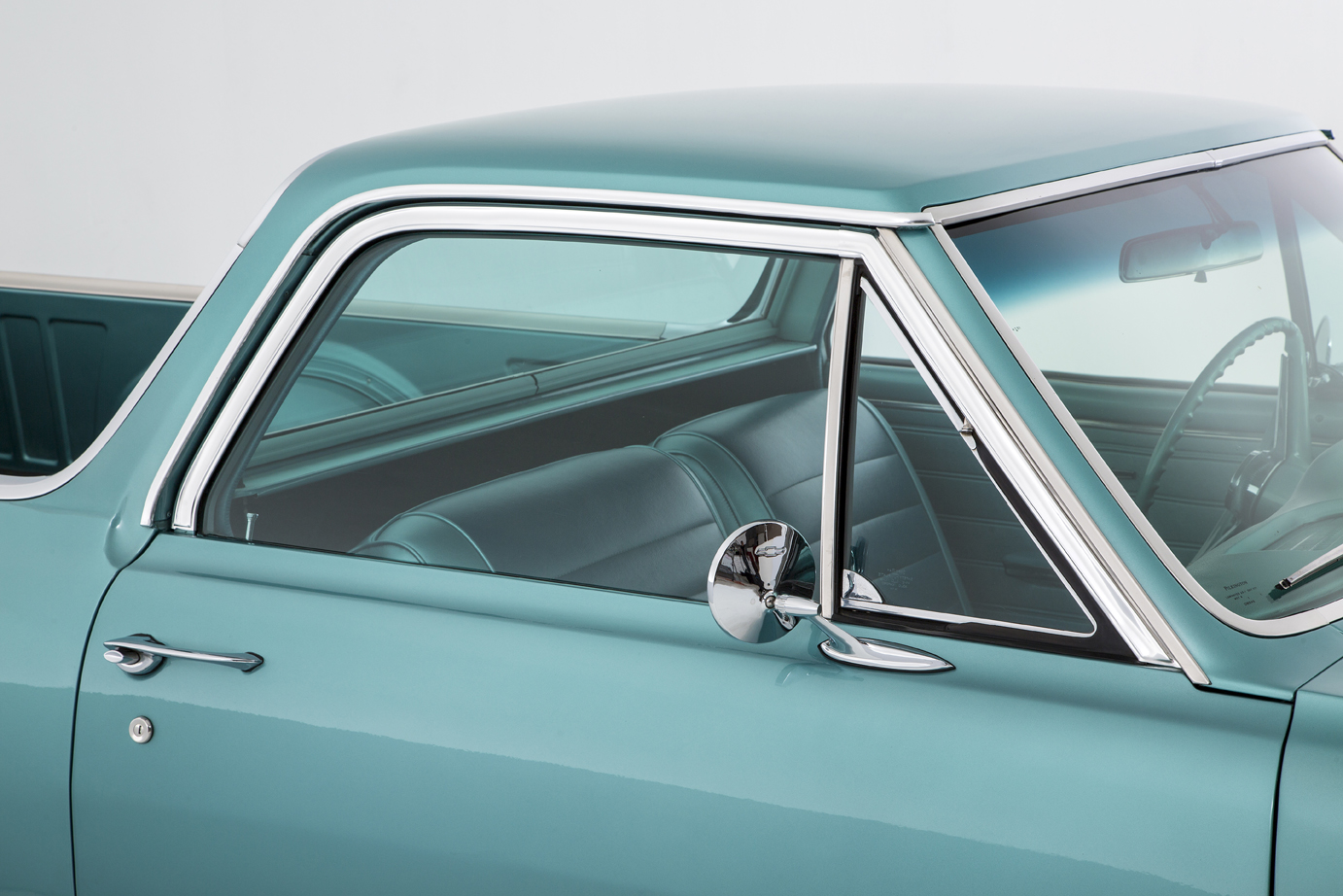The OPGI Customer Car presented in this Spotlight is a near perfect example of what might be one of the most popular El Camino variants among collectors and enthusiasts today. Richard Mazzetta of Woodland Hills, California owns this beautiful turquoise 1965 El Camino that has been restored (with plenty of OPGI parts) to near factory original specs both inside and out. Sporting a 283 Chevy small block and Muncie M-20 4-speed, Richard’s El Camino is a perfect example of the combination of performance, utility and style that have made these vehicles so popular throughout the years.
1965 El Camino
Richard Mazzetta, Woodland Hills, California
Chevrolet Small Block 283
Muncie M-20 4-Speed Transmission
Chevrolet Rally Wheels – 15×8 rear, 15×7 front
BFGoodrich TA Radial Tires – P245/60/15 rear, P225/60/15 front
Factory air conditioning, Edelbrock intake manifold, carb, fuel pump, valve covers, and air cleaner. MSD distributor, coil, and spark plug wires. Comp Cams roller rockers and camshaft. Flowmaster exhaust. Autometer gauges and tachometer.
=========== ============= ===========
In Praise of the El Camino
While most Chevy enthusiasts know that the El Camino concept of a passenger-car–turned-pickup was successful enough to remain in production from 1959 to 1988, many are not aware that it was not really much of a hit with the public at first. In fact, the first version of the El Camino only lasted two years before Chevrolet discontinued it.
It wasn’t until production resumed in 1964 that the second-generation El Camino was based on the Chevelle A-body platform and received a revised suspension system with a cargo hauling/towing capacity that appealed to the needs of a wider customer base. As a result, sales of the 1964 El Camino were much better, and proved strong enough to support continuous production until 1977 based on the Chevelle platform, and continued through the 1978 to 1988 model years following the transition of the Chevelle to the smaller Malibu G-body platform.
In Spanish, El Camino means “the path” or “the way” and although it was not the first vehicle to try to find a way to combine a car with a truck, the El Camino enjoyed a good path to sales success as it evolved over the years along with the more popular Chevelle it was based on. In 1968 Chevrolet introduced the third generation El Camino along with an SS model as an option package and muscle car enthusiasts quickly recognized that it promised the performance of the Chevelle SS in a less expensive package. The El Camino also enjoyed the advantage of being less expensive to insure because it was classified and titled in North America as a truck.
The fourth generation El Camino appeared in 1973 and suffered the same maladies as many American cars of the mid-70s, a time of reduced horsepower and torque due to federal fuel consumption and crash standards. Regardless, the El Camino sold well enough to carry through to the fifth generation version in 1978 when it got a bit smaller along with the G-body Malibu it shared a platform with.
The fifth generation El Camino was available with several small V-8s as well as both Chevy and Buick V-6 engines. When the El Camino received more powerful engine options in the mid-80s, it continued to enjoy sales success as a middleweight alternative to the larger and heavier “real” trucks of the day. The 80s also saw several the introduction of several specialty models including the Super Sport, Black Knight, Royal Knight and Conquista, while GMC badged El Camino variants included the Sprint and Caballero models.
Although the El Camino was last offered in 1988, there are rumors that GM is considering bringing it back after 2015. If that happens, the next El Camino will likely be a variant of GM’s existing Australian-market vehicle, the Holden Ute. Today, the El Camino has been out of production for just over a quarter of a century and whether or not it ever sees the production line again, it remains one of the most popular and iconic Chevrolets ever built.

